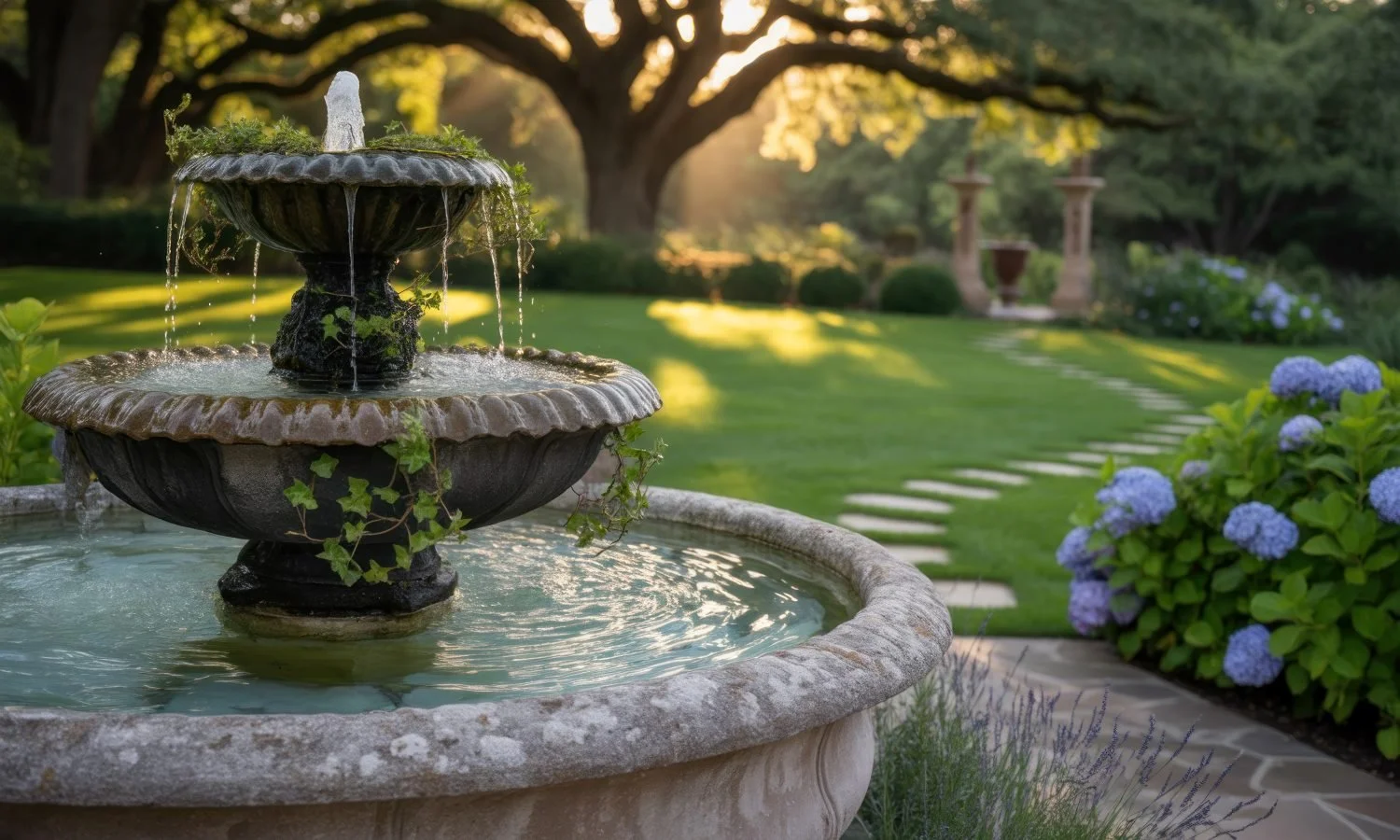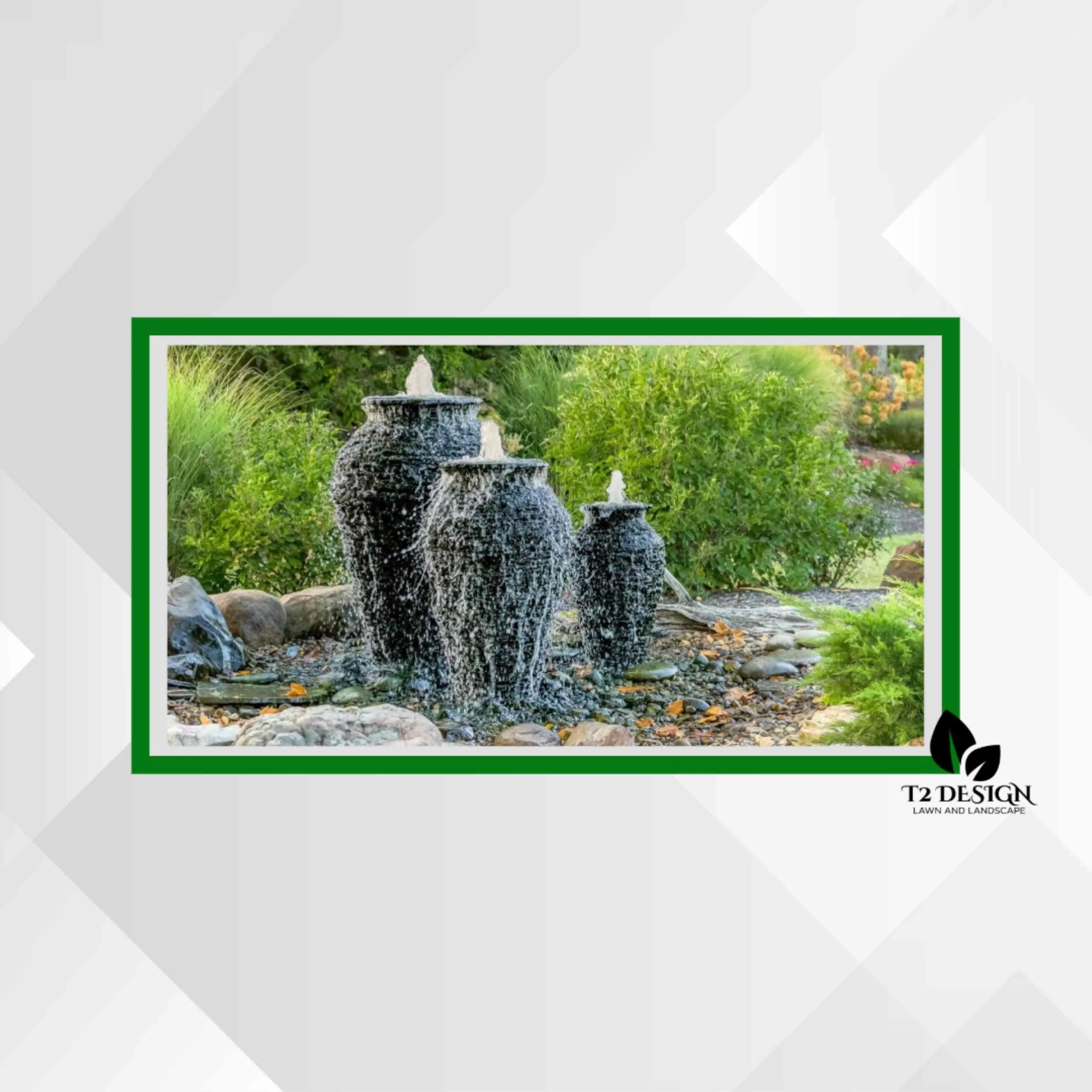Time to winterize your backyard water feature
We love our water features, but winter in Northeast Ohio is the time to shut yours down. Water running through the lines or collecting in a pond can freeze, damaging liners, fountain details, and the pump, so proper winterizing is critical to keeping your water feature in good condition for years of enjoyment.
At T2 Design, we’ll create and install your waterfall, fountain, or koi pond so you can enjoy it for the longest season possible. But don’t be tempted to run your water feature during winter months, even if temperatures are trending warmer than normal. Plan to winterize yours before there is the danger of freezing temperatures at night.
Water Feature Prep-Tips, Do’s and Don’ts:
Make arrangements for winter storage for fish and plants that reside in your waterscape. Some plants tend to be seasonal and you may choose to simply replace them with new ones each year.
Whether you have a pond or a basic pump vault, the bottom surface will need to be cleared of debris and cleaned. Be sure to address any algae growth to prevent staining.
Completely drain your water feature, ensuring water is thoroughly expelled from all water lines. Any water left behind could freeze and damage the lines.
If you have a small water feature, such as a small fountain, you may want to disassemble the entire unit and store it indoors. For larger water features and those built into your landscaping, be sure no standing water remains in the pond and water lines, then remove the pump and store it indoors.
Any mildew, calcium or lime scale buildup should be removed carefully and completely.
For basins and bowls that will remain outside for the winter, absorbent materials under a protective tarp can help whisk away moisture that seeps in.
A Northeast Ohio winter is not the environment to attempt to keep your water feature running. Even if your feature is a constantly moving waterfall, water that settles between rocks and into crevices can freeze and crack natural stones and artificial materials.
Don’t plan to run your fountain or waterfall during the winter no matter the forecast for mild temperatures.
Don’t add antifreeze or any de-icing product to the water, as these chemicals can be toxic to the environment and wildlife and they may damage your fountain and pump.
Don’t wait to winterize until temperatures are close to freezing during the day, as nighttime temperatures can easily drop below freezing. The small amount of water in your lines and pump can quickly freeze.
Do clean all parts thoroughly whether you are taking them inside for storage or they will remain outdoors for the winter.
Do cover your fountain or water feature with a protective tarp to keep snow and moisture out of the bowl and crevices.
If you need more information about the design of your water feature and the best method of winterizing it, or if you would like professional service to prepare your water feature for winter weather, call T2 Design today. We will ensure you get years of enjoyment from your water feature and that it is ready to go in the spring.
FAQs: Winterizing Your Backyard Water Feature
1. When should I start winterizing my backyard water feature?
The best time to winterize your water feature is in late fall, before the first hard freeze. In Northeast Ohio and similar climates, this usually means late October to early November. Prepping early helps protect pumps, pipes, and liners from ice damage.
2. Do I need to drain my pond or fountain for winter?
Yes—most outdoor fountains and smaller water features should be drained before freezing temperatures arrive. For ponds with fish, you’ll only partially drain the water and install a pond heater or de-icer to maintain a small hole for oxygen exchange.
3. Can I leave my water pump running all winter?
In most cases, no. Pumps can freeze and crack when temperatures drop below freezing. If your water feature isn’t designed for year-round use, disconnect and store the pump indoors. For continuous-flow waterfalls or large ponds, consult your landscape professional about winter-safe operation.
4. How do I protect my water feature from freezing damage?
First, remove and clean your pump and filters, then drain any standing water. Next, cover the basin or pond with a durable tarp or netting to prevent debris buildup. If you have decorative rocks or statues, make sure they’re stable and not sitting in standing water that can freeze and expand.
5. Should I add any treatments before winter?
Yes. Applying a water clarifier or sludge remover before you shut down your system helps reduce algae and debris buildup over winter. This makes spring startup much easier and keeps your water feature in better condition long-term.
6. What happens if I don’t winterize my water feature?
Skipping winterization can lead to cracked basins, broken pumps, burst tubing, and costly spring repairs. Ice expansion causes serious structural damage, so taking the time to winterize now saves money and headaches later.
7. Can a professional handle water feature winterization for me?
Absolutely! Many homeowners hire a landscape or pond service to handle draining, cleaning, and protecting the system. Professionals ensure all parts are properly winterized and can safely store components like pumps and filters until spring.
8. What’s the easiest way to get my water feature ready for winter?
Follow a simple three-step plan:
Clean and remove debris.
Drain and disconnect equipment.
Protect or cover your feature.
If you’re unsure about any step, contact a local landscape company that specializes in water feature maintenance for a quick, professional service before freezing weather arrives.




